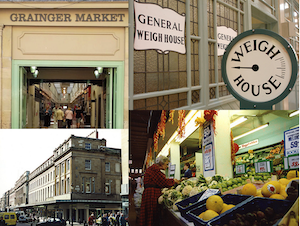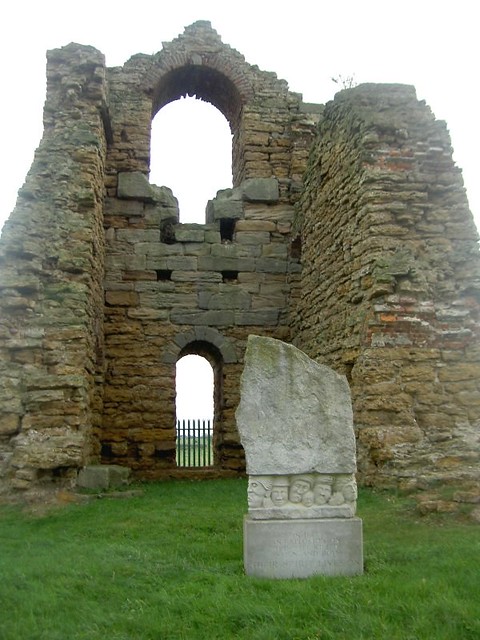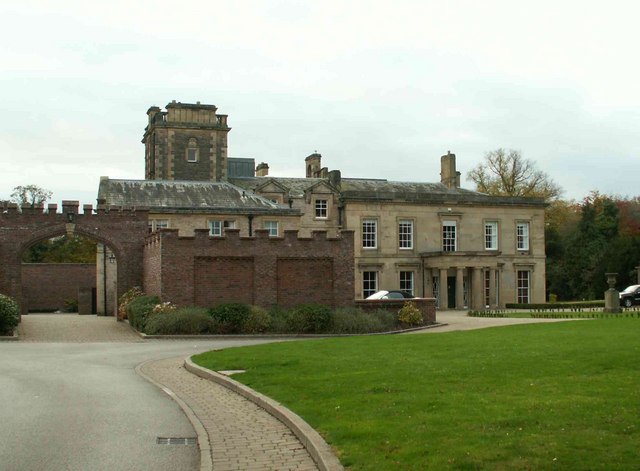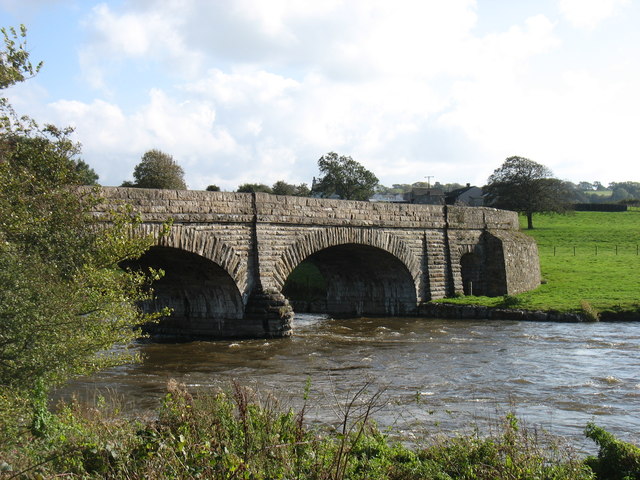Topics > Historical Periods > 19th Century > 1830s > 1835
1835
In Northern England:
- 18th June 1835: 102 men and boys killed in an explosion at Wallsend Colliery.
- 2nd July 1835: Haswell Colliery opened; the first colliery with a steel cable down its mine shaft.
- 24th October 1835; the Grainger Market in Newcastle was opened to the public for the first time.
- 1835; Neville Street in Newcastle was built to connect Collingwood Street with Scotswood Road.
- 1835: coal production began at Wearmouth Colliery, Sunderland.
- 1835: opening of Urpeth Colliery in County Durham.

Co-Curate Page
Grainger Market
- Overview About Grainger Town Map Street View The Grainger Market was opened to the public on the 24th October 1835, and was originally divided into a butchers’ market and separate …

from http://www.twsitelines.info/S…
Tyne and Wear HER(4091): Newcastle, Victoria Tunnel
- "This was an underground railway built for Porter and Latimer (by William Gilhespie, local engineer) from Spital Tongues Colliery to the Tyne near Glasshouse Bridge. The lease for mining was …
Added by
Simon Cotterill

from http://upload.wikimedia.org/w…
St. Andrew's Church : Bolam Parish Church of Heighington : Built 1835
- Photograph by Hugh Mortime published under the Creative Commons Attribution-Share Alike 2.0 Generic license.
Added by
Simon Cotterill

from Newcastle libraries (flickr)
048785:Grainger Market was opened in 1835 and was designed and built by John Dobson and Richard Grainger.
Pinned by Simon Cotterill

Co-Curate Page
Haswell Colliery (1835-1896)
- Haswell Colliery, located between Haswell and Haswell Plough, first began producing coal on 2nd July 1835. It was reputably the first colliery in the world with a steel cable down …

Co-Curate Page
Church of St. Andrew, Bolam
- Overview Map Street View St Andrew's is the parish chuch of Bolam, County Durham. It was built in 1835 and is a Grade II listed on the National Heritage List …

Co-Curate Page
Wallsend Colliery (1778 - 1935)
- Wallsend Colliery consisted of 7 pits and was active between 1778 and 1935. The high main coal seam was nearly six feet thick and the term "Wallsend coal" was at …

Co-Curate Page
West Lodge and Gateway
- Overview Map Street View Lodge, dated 1835, and gateway to Chillingham Castle, by Edward Blore for the Earl of Tankerville. A Geade II listed building.

Co-Curate Page
Wylam Station
- Overview About Wylam Station Map Street View Wylam Station was built in 1835 for the Newcastle and Carlisle Railway. It is one of the earliest stations in the world still …

Co-Curate Page
Wearmouth Colliery (1835-1993)
- Overview About Wearmouth Colliery Wearmouth Colliery in Sunderland was sunk from 1826-1834 and at the time it began producing coal in 1835 it was the deepest mine in the world …

Co-Curate Page
Windlestone Hall
- Overview About Windlestone Hall Map There has been a house on the site since the 16th century. The present Windlestone Hall was built c.1835 by Ignatius Bonomi for Sir Robert …

Co-Curate Page
Warwick Bridge (bridge)
- Bridge over the River Eden at Warwick Bridge, Cumbria.

Co-Curate Page
Rickerby House
- Overview Map Rickerby House was built c.1835 for George Head Head (c.1795 - 1876), banker, mine owner and High Sheriff of Cumberland. Landscaped gardens were laid out around the house. In …

Co-Curate Page
Rickerby Park Tower
- A folly, and possibly a dovecote built c.1835, for George Head Head, in the grounds of Rickerby House.[1] The tower is Grade II listed on the National Heritage List for …

Co-Curate Page
Holy Trinity and St George RC Church
- Overview About the Church Map Street View Holy Trinity and St George's Church is located on the corner of New Street and Blackhall Road in Kendal. The Roman Catholic church …

Co-Curate Page
Turk's Head Hotel
- Grey Street was built c1835 by Richard Grainger as part of the 19th Century redevelopment of Newcastle City Centre. Nos. 69 to 73 Grey Street incorporates the former Royal Turk's …

Co-Curate Page
Allonby House (former baths)
- Allonby House was built in 1835 as a sea-water baths and assembly room, located in The Square in Allonby. It is now a private house. Allonby House is Grade II listed …

Co-Curate Page
Cleveland Buildings, Middlesbrough
- Overview Map Street View The Cleveland Buildings are located on the corner of Cleveland Street and Lower Gosford Street, in the Middlehaven area of Middlesbrough. It was built as a …

Co-Curate Page
Raby Hunt Inn
- Overview About the Raby Hunt Inn Map Street View The Raby Hunt Inn in the village of Summerhouse was built in c.1835, with an earlier 18th century wing to the …

Co-Curate Page
Broughton High Bridge
- Overview Map Street View Broughton High Bridge is a road bridge over the River Derwent, located about ¼ mile south of Great Broughton and Little Broughton, and ½ mile north …

Co-Curate Page
Nun Street
- Overview Timeline Map Street View Nun Street is a road in the centre of Newcastle, which runs from Grainger Street in a roughly north-westerly direction to Clayton Street. The full …

Co-Curate Page
19-31, Grey Street, Newcastle
- Nos. 19-31 (odd numbers) on Grey Street in Newcastle. Shops and houses, now offices. Circa 1835, probably by John Wardle, for Richard Grainger. Sandstone ashlar; Welsh slate roof. Renewed ground floor, …


Co-Curate Page
Grainger Market
- Overview About Grainger Town Map Street View The Grainger Market was opened to the public on the 24th October 1835, and was originally divided into a butchers’ market and separate …

from http://www.twsitelines.info/S…
Tyne and Wear HER(4091): Newcastle, Victoria Tunnel
- "This was an underground railway built for Porter and Latimer (by William Gilhespie, local engineer) from Spital Tongues Colliery to the Tyne near Glasshouse Bridge. The lease for mining was …
Added by
Simon Cotterill

from http://upload.wikimedia.org/w…
St. Andrew's Church : Bolam Parish Church of Heighington : Built 1835
- Photograph by Hugh Mortime published under the Creative Commons Attribution-Share Alike 2.0 Generic license.
Added by
Simon Cotterill

from Newcastle libraries (flickr)
048785:Grainger Market was opened in 1835 and was designed and built by John Dobson and Richard Grainger.
Pinned by Simon Cotterill

Co-Curate Page
Haswell Colliery (1835-1896)
- Haswell Colliery, located between Haswell and Haswell Plough, first began producing coal on 2nd July 1835. It was reputably the first colliery in the world with a steel cable down …

Co-Curate Page
Church of St. Andrew, Bolam
- Overview Map Street View St Andrew's is the parish chuch of Bolam, County Durham. It was built in 1835 and is a Grade II listed on the National Heritage List …

Co-Curate Page
Wallsend Colliery (1778 - 1935)
- Wallsend Colliery consisted of 7 pits and was active between 1778 and 1935. The high main coal seam was nearly six feet thick and the term "Wallsend coal" was at …

Co-Curate Page
West Lodge and Gateway
- Overview Map Street View Lodge, dated 1835, and gateway to Chillingham Castle, by Edward Blore for the Earl of Tankerville. A Geade II listed building.

Co-Curate Page
Wylam Station
- Overview About Wylam Station Map Street View Wylam Station was built in 1835 for the Newcastle and Carlisle Railway. It is one of the earliest stations in the world still …

Co-Curate Page
Wearmouth Colliery (1835-1993)
- Overview About Wearmouth Colliery Wearmouth Colliery in Sunderland was sunk from 1826-1834 and at the time it began producing coal in 1835 it was the deepest mine in the world …

Co-Curate Page
Windlestone Hall
- Overview About Windlestone Hall Map There has been a house on the site since the 16th century. The present Windlestone Hall was built c.1835 by Ignatius Bonomi for Sir Robert …

Co-Curate Page
Warwick Bridge (bridge)
- Bridge over the River Eden at Warwick Bridge, Cumbria.

Co-Curate Page
Rickerby House
- Overview Map Rickerby House was built c.1835 for George Head Head (c.1795 - 1876), banker, mine owner and High Sheriff of Cumberland. Landscaped gardens were laid out around the house. In …

Co-Curate Page
Rickerby Park Tower
- A folly, and possibly a dovecote built c.1835, for George Head Head, in the grounds of Rickerby House.[1] The tower is Grade II listed on the National Heritage List for …

Co-Curate Page
Holy Trinity and St George RC Church
- Overview About the Church Map Street View Holy Trinity and St George's Church is located on the corner of New Street and Blackhall Road in Kendal. The Roman Catholic church …

Co-Curate Page
Turk's Head Hotel
- Grey Street was built c1835 by Richard Grainger as part of the 19th Century redevelopment of Newcastle City Centre. Nos. 69 to 73 Grey Street incorporates the former Royal Turk's …

Co-Curate Page
Allonby House (former baths)
- Allonby House was built in 1835 as a sea-water baths and assembly room, located in The Square in Allonby. It is now a private house. Allonby House is Grade II listed …

Co-Curate Page
Cleveland Buildings, Middlesbrough
- Overview Map Street View The Cleveland Buildings are located on the corner of Cleveland Street and Lower Gosford Street, in the Middlehaven area of Middlesbrough. It was built as a …

Co-Curate Page
Raby Hunt Inn
- Overview About the Raby Hunt Inn Map Street View The Raby Hunt Inn in the village of Summerhouse was built in c.1835, with an earlier 18th century wing to the …

Co-Curate Page
Broughton High Bridge
- Overview Map Street View Broughton High Bridge is a road bridge over the River Derwent, located about ¼ mile south of Great Broughton and Little Broughton, and ½ mile north …

Co-Curate Page
Nun Street
- Overview Timeline Map Street View Nun Street is a road in the centre of Newcastle, which runs from Grainger Street in a roughly north-westerly direction to Clayton Street. The full …











